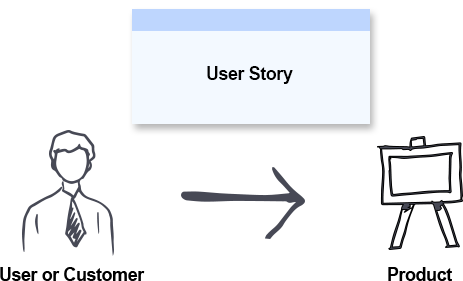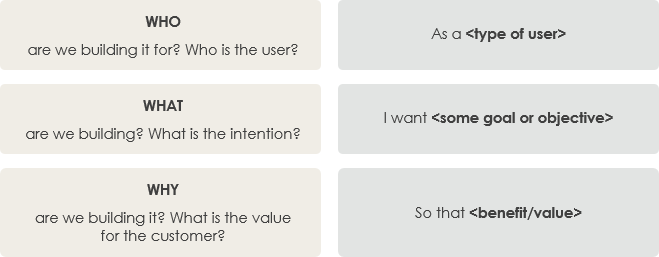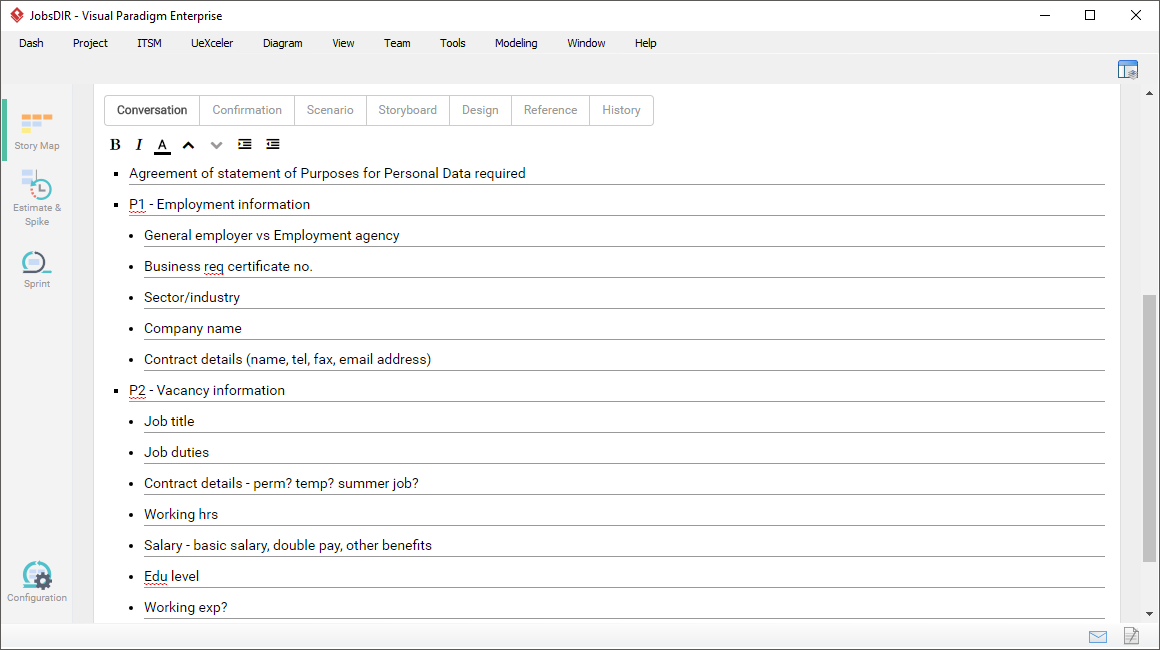Konsep cerita pengguna
Cerita pengguna adalah metode ringan untuk dengan cepat menangkap “siapa”, “apa” dan “mengapa” dari kebutuhan produk. Singkatnya, cerita pengguna adalah ide yang mengungkapkan kebutuhan yang diinginkan pengguna. Cerita pengguna bersifat singkat, dan setiap elemen biasanya mengandung kurang dari 10 atau 15 kata. Cerita pengguna adalah daftar “yang harus dilakukan” yang membantu Anda mengidentifikasi langkah-langkah sepanjang jalur proyek. Mereka membantu memastikan bahwa proses Anda, dan produk yang dihasilkan, memenuhi kebutuhan Anda.

Konsep hal semacam ini saya suka katakan sebagai cara untuk memahami dan menjelaskan kata;
cerita pengguna = pengguna + cerita = orang + cerita + peristiwa
Artinya, apa yang ingin dilakukan seseorang untuk alasan apa, menyaring tiga elemen yaitu siapa, mengapa, apa. Dari perspektif pengguna adalah deskripsi singkat yang digunakan untuk mengonfirmasi pengguna dan kebutuhan pengguna.
Tiga elemen dari cerita pengguna
Cerita pengguna digunakan dalam proses pengembangan perangkat lunak sebagai bentuk ekspresi untuk menggambarkan kebutuhan. Untuk menstandarisasi ekspresi cerita pengguna dan memfasilitasi komunikasi, cerita pengguna biasanya diekspresikan dalam format berikut:

Sebagai <peran pengguna>, saya ingin <menyelesaikan aktivitas>, untuk <merealisasikan nilai>.
Sebuah cerita pengguna mengandung tiga elemen.

- persona (siapa?): siapa yang ingin menggunakan ini
- aksi (apa?): tindakan apa yang harus diselesaikan
- Nilai: (mengapa?) lakukan ini dan nilai apa yang dapat dibawa dengan melakukan ini
Tiga, prinsip 3C
Informasi deskriptif dari cerita pengguna ditulis di kartu kertas dengan cara tradisional yang ditulis tangan, jadi Ron Jeffries (2001) menyebut ketiga aspek ini 3C:
- kartu (Card),
- percakapan (Conversation) dan
- konfirmasi (Confirmation).

Kartu: Cerita pengguna umumnya ditulis di kartu kecil dengan deskripsi singkat tentang cerita, aturan, dan kriteria penyelesaian.
Bagian depan kartu berisi deskripsi cerita dalam format: Sebagai <peran>, saya ingin <menyelesaikan aktivitas> untuk <merealisasikan nilai> menggambarkan kebutuhan; bagian belakang kartu berisi aturan dan kriteria penyelesaian untuk menyelesaikan cerita pengguna dalam format: Diberikan…Ketika…Maka.
Percakapan: Detail di balik cerita pengguna berasal dari komunikasi dengan pelanggan atau pemilik produk; pastikan semua pihak memahami cerita dengan benar.
Konfirmasi: Konfirmasikan bahwa cerita pengguna telah diselesaikan dengan benar melalui pengujian penerimaan.
- Menulis cerita pengguna umum
- Apa itu Pemetaan Cerita Pengguna?
- Bagaimana Mengelola Cerita Pengguna dengan Peta Cerita?
- Prioritaskan cerita pengguna
This post is also available in Deutsch, English, Español, فارسی, Français, 日本語, Polski, Portuguese, Ру́сский, Việt Nam, 简体中文 and 繁體中文.













